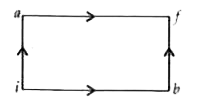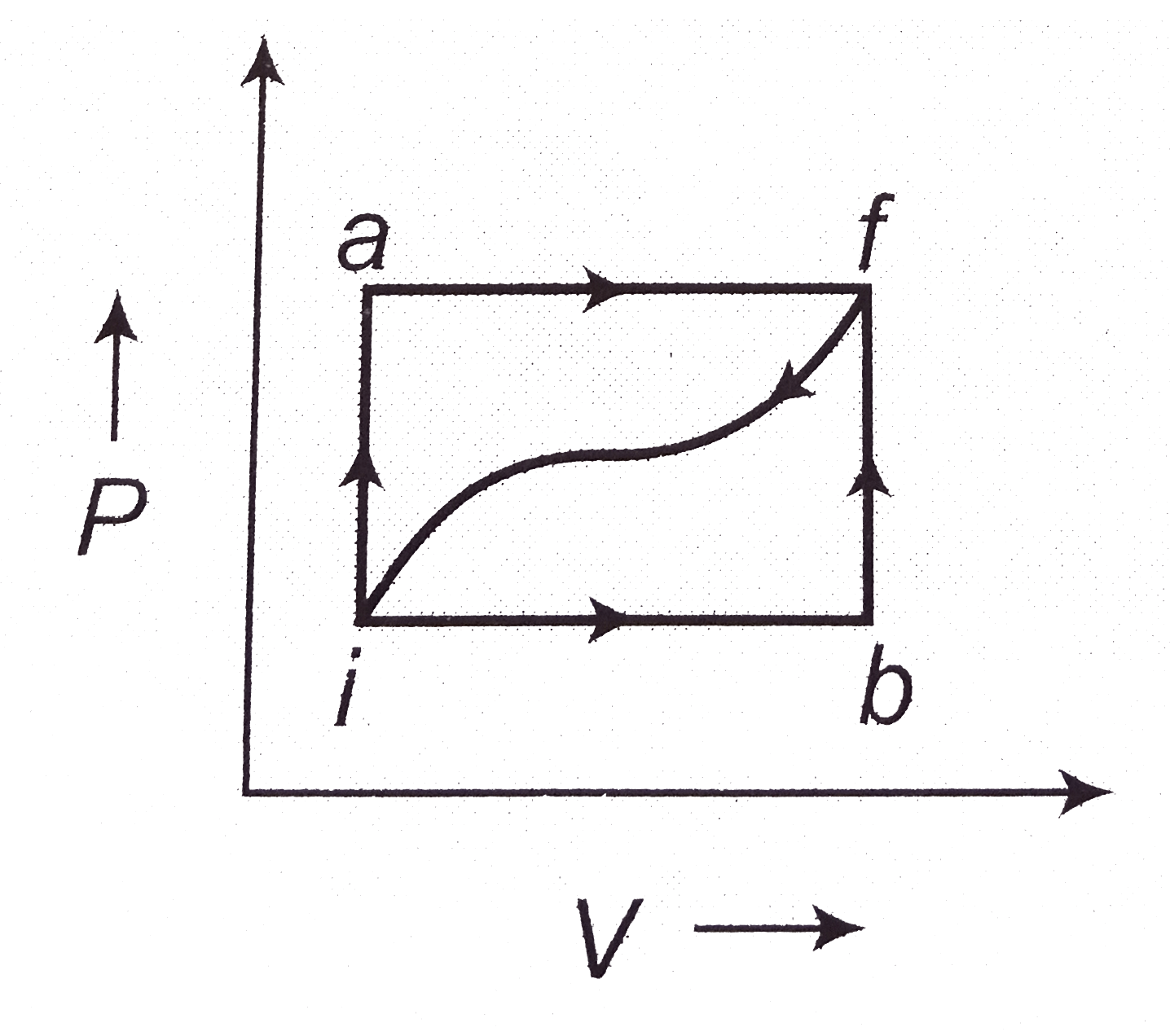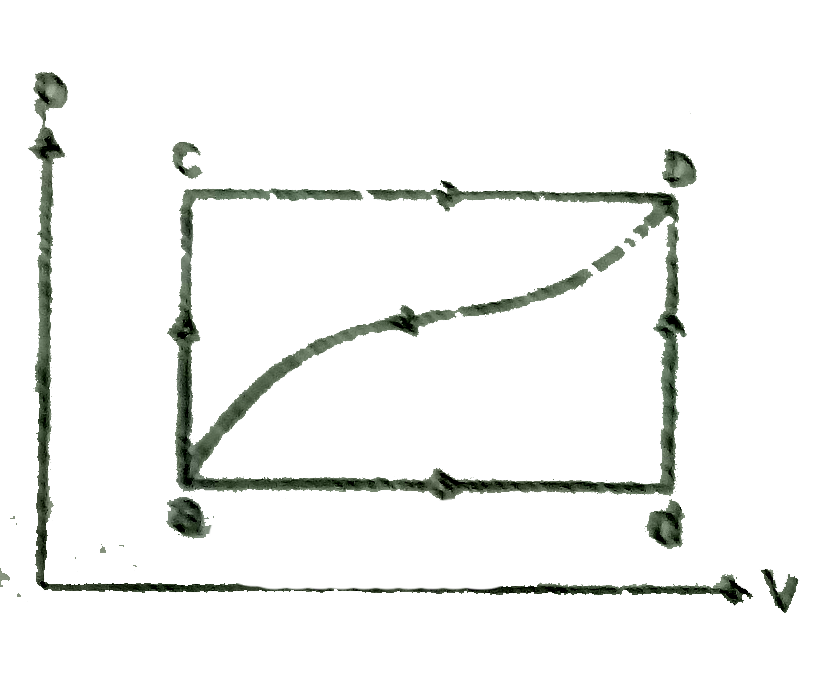When a system is taken from state f along path iaf,Q=50J and W=20J. Along path ibf,Q=35J. If W=−13J for the curved return path fI,Q for this path is

33 J
23 J
−7 J
−43J
The correct Answer is:D
Process iaf: ΔQ=ΔU+ΔW
ΔU=Uf−Ui=ΔQ−ΔW=50−20=30J
Process fi: ΔQ=ΔU+ΔW=Ui−Uf+ΔW
=−30−13=−43J
Topper's Solved these Questions
Similar Questions
When a system is taken from state I to state f along path iaf in fig - 21.23 Q = 100 cal and W = 40 cal Along path ibf Q = 72 cal . (a) what is W along path ibf ?
View SolutionWhen a system is taken from state i to state f alone the path iaf, it is found that Q=50 cal and W=20 cal. Along the path ibf, Q=36 cal (figure) (a) What is W along the path ibf ? (b) If W=−13 cal for the curved return path fi, what is Q for this path ? (c) Take Ui=10 cal. What is Uf? (d) If Ub=22 cal, what is Q for the process in and for the process bf ?

View Solution
Knowledge Check
When a system is taken from state I to state f along the path iaf, it is found that Q = 50 cal and W = 20 cal. Along the path ibf, Q = 36 cal. W along the path ibf is
 A14 calB6 calC16 calD66 cal
A14 calB6 calC16 calD66 calWhen a system is taken from state i to state f along the path iaf, it is found that Q=50calandW=20cal. Along the path ibf Q=36cal. W along the path ibf is
 A14calB6calC16calD66cal
A14calB6calC16calD66calWhen a system is taken from state 1→2 along the path 1a2 it absorbs 50cal of heat and work done is 20cal. Along the path 1b2. Q=36cal. What is the work done along 1b2?
 A56calB66calC16calD6cal
A56calB66calC16calD6cal
When a thermodynamic system is taken from an initial state I to a final state F along the path IAF, as shown in Fig. the heat energy absorbed by the system is Q=55J and work done by the system is W=25J. If the same system is taken along the path IBF, the value of Q=35J.
(a) If W=−15J for the curved path FI, how much heat energy is lost by the system along this path ?
(b) If U1=10J, what is UF ?
(d) If UB=20J, what is Q for the process BF and IB ?
View Solution
When a system is taken from a state i to a state f in Figure, along the path iaf, we find ΔQ=50cal and ΔW=20cal while during the path ibf, ΔQ=36cal. If Ui=10cal.
(a) What is U?
What is W along the path ibf?
(c ) If W=−13cal, along the curved path fi, what is ΔQ for this path?
(d) If Ub=22cal, what is ΔQ for the process ib? for bf?
View SolutionWhen a system is taken from stata a to state b along the path acb as shown in figure, 60 J of heat flows into the system and 30 J of work is done by the system. Along the path adb, if the work done by the system is 10 J, heat flow into the system is

View SolutionWhen a system is taken from state 'a' to state 'b' along the path 'acb', it is found that a quantity of heat Q = 200 J is absorbed by the system and a work W = 80 J is done by it. Along the path 'adb', Q = 144 J

In the above question, if Ud=88J, heat absorbed for the path 'db' is
View SolutionWhen a system is taken from state 'a' to state 'b' along the path 'acd', is is found that a quantity of heat Q=200J is absorbed by the system and a work W=80J is done by it. Along the path 'adb', Q=144J. The work done along the path 'adb' is

View Solution

